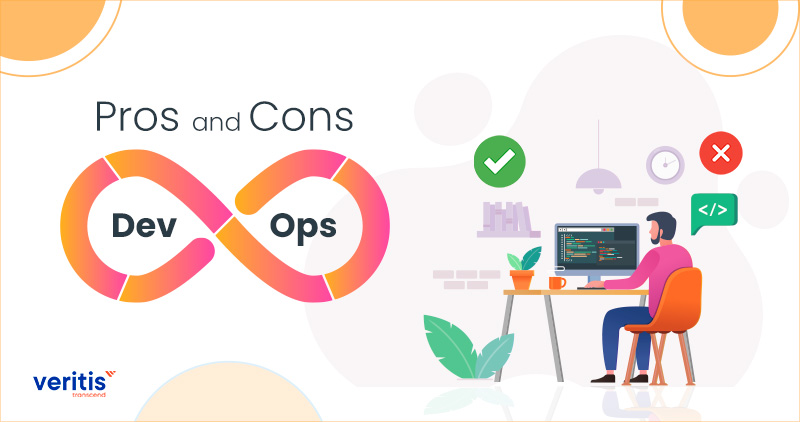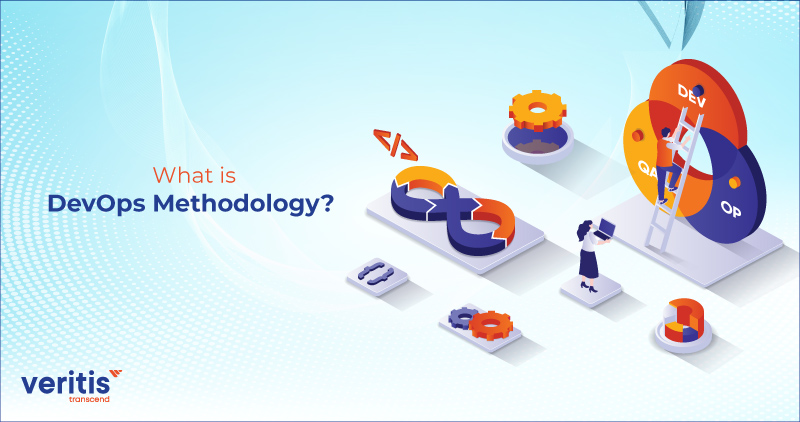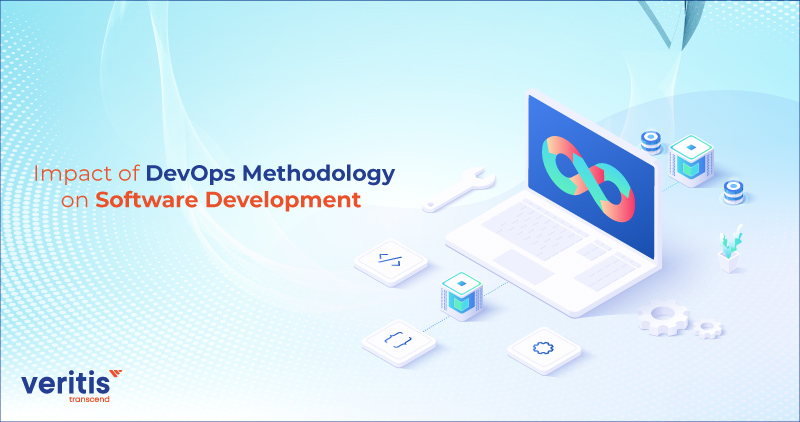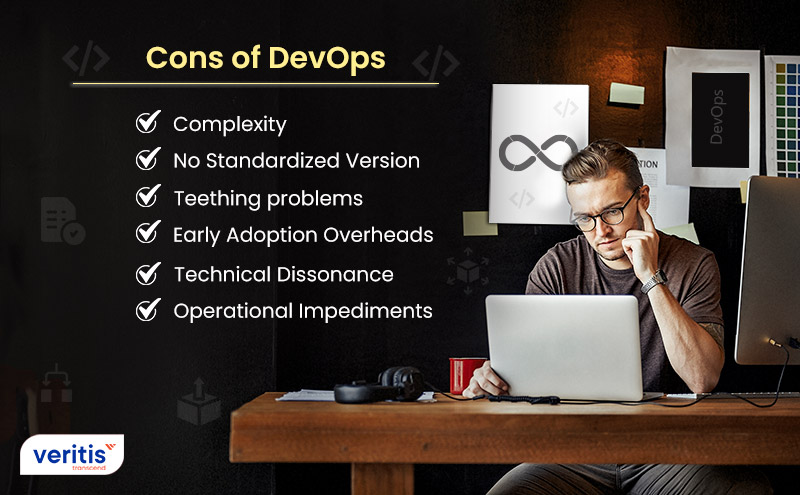
DevOps is a great strategy that allows various companies’ developers to experience better product success. With the buzz surrounding DevOps, it is easy to assume it is a technology solution that solves your production and quality issues. However, DevOps is more of an approach that can change work culture by reinforcing collaboration and cohesiveness.
Previously, the waterfall was the approach that led developers to create robust products. However, it consumed massive amounts of time, and additionally, there was a lot of scope for improvement throughout the methodology. The primary area that needed to be bettered was that developers and operations staff members were siloed differently, and they had a tough time hammering out the differences that sprouted along the way. From bugs to source code modifications, there were a significant number of challenges that impeded the methodology.
Seeing the potential for a new approach, a group of developers got together in 2000 and penned ‘Manifesto for Agile Software Development,’ which paved the way for the agile development process. The software was developed in large batches and deployed as a whole package. The software development was broken down into smaller batches with the agile approach. This enabled the project members to develop and deploy iterative updates, which were relatively more straightforward to modify and sported little time to market.
DevOps brings in many principles from Agile. However, it is not the same as its predecessor as it differs from agile and waterfall. While those differences can always be discussed, let’s not digress. While penning other blogs, our team saw a disturbing observation from Gartner.
According to Gartner, “through 2023, 90% of DevOps initiatives will fail to fully meet expectations due to the limitations of approaches used by leadership, and not technical.”
This brings forth a new and often ignored perspective: DevOps security has its own set of flaws. While its advantages motivate its adoption, companies should also understand that every technology has disadvantages. In this blog, we shall explore a few things related to DevOps methodology, the principles of DevOps, and the pros and cons that come with them.
What is DevOps Methodology?

The DevOps methodology encompasses the fundamental principles and ideas that harmonize the domains of operations and development. The DevOps culture emerged roughly a decade ago and incorporated the DevOps Life Cycle Management, encompassing the stages of Planning, Coding, Building, Testing, Releasing, Deploying, Operating, and Monitoring.
The adoption of the DevOps culture is nearly ubiquitous among software companies worldwide, yielding remarkable advantages. In 2020 and beyond, the demand for DevOps professionals has surged, with certified individuals being particularly sought after over their non-certified counterparts. To delve deeper into this field, consider enrolling in a reputable institute’s DevOps training program and attaining a professional certification.
The conventional Software Development Life Cycle (SDLC) suffers from numerous drawbacks, including high costs, a plethora of errors and bugs, delays and errors caused by human intervention, software realization only at the end of multiple cycles, lack of automation, segregated operations and development, minimal collaboration, inadequate team communication, prolonged timeframes, and an inefficient and ineffective culture. These shortcomings were the catalyst for the emergence of the DevOps methodology.
The DevOps Life Cycle (DLC) offers several advantages that were absent in the traditional SDLC. In the DevOps culture, the Continuous Integration/Continuous Delivery (CI/CD) pipeline constitutes an ongoing process encompassing all the sequential steps in product development.
Useful link: AIOPS Solutions: Enhancing DevOps with Intelligent Automation for Optimized IT Operations
How Do DevOps Methodologies Work?
The essence of the DevOps methodology in software development revolves around automating the entire software development process, enhancing its efficiency, and expediting delivery. DevOps methodologies center on fostering communication, collaboration, and integration between software developers and IT operations experts. The primary objective is to optimize the software development process by automating routine tasks, eradicating errors, and minimizing the time required to introduce new features to end-users.
DevOps leverages numerous tools and technologies to realize these goals, including Continuous Integration (CI), Continuous Delivery (CD), and Infrastructure-as-Code (IaC). DevOps security teams can regularly launch software updates with minimal disruption by automating building, testing, and deployment tasks.
Furthermore, Infrastructure-as-Code (IaC) empowers DevOps teams to create and oversee their infrastructure through code, simplifying the process of duplicating environments and swiftly implementing modifications. In the end, DevOps aids organizations in delivering superior software more rapidly, simultaneously curbing expenses and mitigating risks.
What is the Goal of a DevOps Methodology?
The DevOps methodology aims to enhance the efficiency of software delivery by establishing a collaborative and integrated framework that bridges the gap between development and operations teams. This approach prioritizes software deployment automation, reducing the potential for human errors and accelerating the introduction of new products to the market. The adoption of DevOps equips organizations with the tools to bolster their agility and competitive edge, enabling them to innovate and promptly adapt to evolving customer requirements.
DevOps unites developers and operations teams in a collaborative effort to establish a continuous delivery pipeline, guaranteeing swift, efficient, and error-reduced software delivery. This entails the utilization of automation tools for software testing, building, and deployment while also monitoring performance and gathering user feedback to pinpoint opportunities for enhancement. The overarching objective of DevOps security is to foster a culture of collaboration and perpetual betterment, where software development and operations are viewed as interrelated functions rather than isolated entities. By attaining this objective, organizations can realize accelerated time-to-market, superior product quality, and heightened customer satisfaction.
Useful link: Why Should You Adopt DevOps and What are the Benefits it Offers?
Principles of DevOps

DevOps and agile are similar to some extent. However, DevOps methodology prioritizes automation and focuses on merging development and operations members as one unit. These benefits are pertinent in this modern-day as demands are rising, and keeping up with the changing demands, automation, and resilience are vital to staying relevant in the changing times.
While DevOps is often called a methodology or an approach, one should understand that DevOps brings a change in the organization’s culture. Due to the new advantages, one can roll off the products and better the existing products as the feedback is enabled with DevOps platforms. The perennial deployment and improvement are termed CI/CD (Continuous Improvement and Continuous Development). This is one of the essential principles of DevOps.
As improvement is always in the picture, testing and rectifying errors is a given as bugs must be hammered out. This brings forth the requirement for swift testing, and one principle that keeps DevOps ticking is automatic testing. This testing mode doesn’t even require manual testing as bugs are detected by automatic testing, and it lends the chance to developers to fix bugs swiftly. The developers can also subject the project to load testing, giving insights into how the program will function under severe circumstances.
With this, we have covered the principles of DevOps. To sum it up, CI, CD, and automatic testing are the fundamental principles of DevOps. CI provides the inputs to the project members regarding the prevalent issues with the code, and the problems commonly expected in the initial stages are detected and fixed. Automatic testing creates quality issues and allows the developers to fix the bugs. Finally, the final or iterative update will be easily deployed with CD. Now, with the principles summarized, let’s dig into the advantages of DevOps.
Useful link: Top 10 DevOps Tools to Pick for Your Business
Impact of DevOps Methodology on Software Development

DevOps is a software development methodology that substantially influences the development process, mainly speed and quality. Let’s delve into the detailed impact of DevOps on software development.
1) Continuous Development
This marks the initial stage in the DevOps process. It encompasses the creation of code followed by its commitment to a central repository. Subsequently, an automated build and testing process is initiated. Without errors, the code is advanced to a staging environment for additional testing before its final deployment to the production environment.
2) Continuous Integration
Continuous integration is automating code building and testing whenever a modification is introduced. This guarantees early error detection and maintains a consistently deployable code base.
3) Continuous Testing
Continuous testing involves the automated, routine execution of tests against the code base. This proactive approach serves to detect errors at an early stage, thus averting their deployment to the production environment.
4) Continuous Deployment
Continuous deployment entails the automation of code deployment to the production environment. This facilitates swift and efficient changes and deployments to production, bypassing the need for cumbersome approval processes.
5) Continuous Operations
Continuous operations involve the ongoing maintenance of a system, ensuring uninterrupted, round-the-clock functionality. This encompasses error monitoring and rapid system recovery from potential failures.
6) Continuous Monitoring
Continuous monitoring is vigilantly observing the system to pinpoint performance anomalies and errors. This proactive approach aids in early issue detection and timely resolution to prevent downtime.
7) Configuration Management
Configuration management revolves around meticulous record-keeping of alterations made to the code base. This entails monitoring the individuals responsible for the changes and the timing of these modifications. It also involves maintaining a comprehensive version history of the codebase, ensuring the ability to revert to a prior version in case of issues.
Pros of DevOps

Everything has its pros and cons. While DevOps has set out to take the agile process to new heights, it is not without its disadvantages, but DevOps has been acknowledged by many to outweigh its cons with its pros. So, let’s delve into what those advantages are.
1) Faster Time-to-Market
An utterly functional software can be developed faster using the DevOps methodology. The advocated automation saves a tonne of time. Operations that once required numerous handoffs and took weeks to complete now only take a few keystrokes or the execution of a script.
2) Stunted Expenses
With automation finishing crucial tasks, there are a few aspects that one doesn’t have to be bothered about. This is primarily due to how advanced automation has become in recent times. Whether bug detection, update deployment, or the execution of mundane tasks, automation has enough in its arsenal to reduce expenses. While automation may have its fair share of teething troubles, it brings along many benefits in the long run. On average, it was generally observed that companies could reduce their overheads by 20% with DevOps integration.
Useful link: Security Integration – A Secret of Successful ‘Secure DevOps’
3) Seamless Workflow
Let’s face it: waterfall siloed the team members quite rigidly. DevOps brings together the team in a much more effective way. Coordination is the key to productivity, and DevOps principles ensure coordination and collaboration pave the way for a seamless workflow.
4) Bugs Quashed
Automatic testing, one of the principles of DevOps, allows the project members to fix the bugs fast. As a result, the quality standards are met with DevOps faster.
5) Better Integration
Automation helps you deploy updates faster than before. As DevOps brings along automation, project members would have the time to develop DevOps solutions that can support various devices. The automation advantage lends the opportunity to schedule the updates for automatic rollouts, which wicks away the problematic aspects of deploying the DevOps solutions.
6) Planning Improvised
As DevOps breaks down the delivery of the project as iterative updates, the project leads can create a practical roadmap of the deliverables, which includes important aspects such as development, testing, and deployment. The roadmap decides the solution’s life cycle, which every key player, including the stakeholders, should include at this stage.
Useful link: DevOps Adoption Challenges Businesses Must Overcome
Cons of DevOps

DevOps cons are more challenges that need to be overcome. However, as we opined before, the pros outweigh these cons. So, let’s dig into the disadvantages without further ado.
1) Complexity
The complexity of a firm’s IT environment can frequently rise due to the implementation of DevOps Platforms. Companies can create a more complicated, challenging production environment to manage and troubleshoot by integrating many tools and technologies into the software development process. DevOps can also force businesses to spend more money on hardware and software resources, which raises complexity and expenses.
2) No Standardized Version
DevOps is currently not standardized across the entire industry. As a result, DevOps companies must develop unique workflows and toolkits, which can be time-consuming and expensive. Additionally, a deficiency of uniformity may cause uncertainty among staff members regarding the best ways to apply DevOps principles.
3) Teething problems
A lack of skilled DevOps engineers and specialists has resulted from the increased adoption of DevOps. As a result, corporations are frequently forced to hire inexperienced workers or consultants as they scramble to integrate DevOps solutions in the initial phase. Unfortunately, this hotchpotch execution leads to software issues and quality degradation.
Useful link: Future of DevOps: Top 6 DevOps Trends in 2022 and Beyond
4) Early Adoption Overheads
DevOps adoption can frequently result in higher expenditures for enterprises. Enterprises can considerably increase their IT costs by investing in extra hardware and software resources and hiring skilled DevOps specialists. Furthermore, the sophistication of a DevOps system frequently causes issues with the performance and dependability of applications.
5) Technical Dissonance
DevOps solutions also bring with it a slew of technological difficulties. The need to standardize and automate procedures and technologies throughout the business is one of the most pressing. This may be challenging, especially in firms with several apps and DevOps platforms. Another difficulty is incorporating DevOps solutions into a current system without sacrificing safety or speed.
6) Operational Impediments
Finally, the DevOps approach might be challenging to implement from an operational standpoint. Managing deployments and rollbacks regulated and safely is one of the most difficult tasks. It may be challenging, especially in a big and complicated manufacturing setting. Monitoring and logging are also crucial for DevOps success, but they can be challenging to set up and manage.
Useful link: DevOps Market To Be Worth USD 17 Billion By 2026!
Conclusion
As DevOps is an iterative process, firms should anticipate making several modifications and tweaks. Companies can guarantee that their DevOps implementation can adapt and evolve as the demands of the business change by being ready to iterate. The DevOps solutions team should uphold the principles that foster communication and collaboration. By encouraging a sharing culture, businesses may guarantee that information is transmitted quickly and effectively between programmers and operational employees. Furthermore, encouraging two-way communication within the team will aid in developing trust and mutual respect.
One of the most challenging aspects of implementing DevOps is convincing staff to adopt the new processes and technologies. Therefore, organizations should teach their staff the fundamentals of DevOps practices to succeed. In addition, businesses should guarantee that they fully realize the benefits of DevOps by teaching their personnel how to use these new tools and procedures.
With these challenges in place, most organizations opt for an MSP to handle the DevOps implementation. Having scored the Stevie Award in DevOps solution, Veritis is the obvious choice for various companies. Be it Fortune 500 or budding companies, we have the expertise to create customized wonders that shall help you realize your DevOps ambitions.
Explore DevOps Services Got Questions? Schedule A Call
Additional Resources:
- DevOps vs DevSecOps: Approaches Which Amplify Automation and Security
- DevOps Market To Be Worth USD 17 Billion By 2026!
- DevOps – A Perfect Fit in ‘Digital Transformation’ Journey
- How DevOps Helps ‘Startups’? An Overview!
- Why Startups ‘Fail’ in DevOps? Identify Gaps and Take Right Approach
[WPSM_AC id=14269]